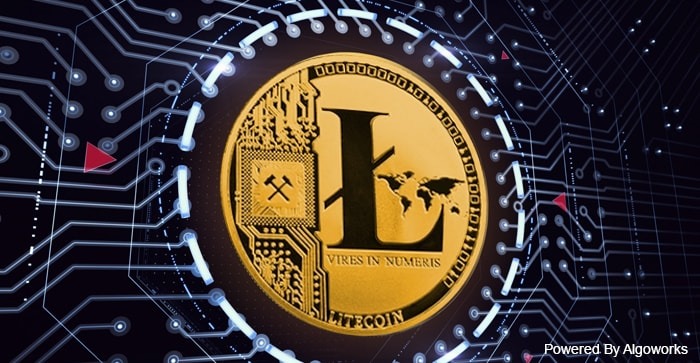Cryptocurrencies have revolutionized the financial world, with Bitcoin leading as the first and most well-known digital currency. However, Bitcoin’s success paved the way for numerous other cryptocurrencies, each offering unique advantages. Among these, Litecoin has gained recognition as “The Silver to Bitcoin’s Gold.” This metaphor emphasizes Litecoin’s complementary role in the crypto space, offering distinct features while maintaining similarities with Bitcoin.
The Origins of Litecoin
Litecoin was created by Charlie Lee, a former Google engineer, in 2011. His vision was to improve upon Bitcoin’s design by addressing its limitations, such as transaction speed and mining centralization. Litecoin’s launch was meant to provide a more efficient, accessible, and scalable alternative for everyday transactions. Unlike Bitcoin’s anonymous founder Satoshi Nakamoto, Charlie Lee has maintained a public presence, providing transparency and fostering trust within the cryptocurrency community.
Lee’s primary goal was to create a digital currency that complemented Bitcoin rather than competed with it. While Bitcoin aimed to serve as a store of value, Litecoin sought to enhance its usability as a medium of exchange. By making strategic improvements to Bitcoin’s core framework, Litecoin became one of the earliest and most enduring altcoins, maintaining its place as a reliable cryptocurrency for over a decade.
Also Read: Ripple (XRP): Revolutionizing Cross-Border Payments
Key Features of Litecoin
Litecoin distinguishes itself from Bitcoin through several notable features. First, its faster transaction speeds significantly improve usability. Litecoin’s blockchain generates a new block every 2.5 minutes, compared to Bitcoin’s 10-minute interval. This allows for quicker confirmation times, making it more practical for everyday transactions, such as buying goods or transferring funds rapidly. Users benefit from reduced waiting periods, enhancing their overall experience.
Another key feature is Litecoin’s lower transaction fees. Unlike Bitcoin, where fees can become prohibitively high during periods of network congestion, Litecoin offers an affordable alternative. This cost-effectiveness has made it popular for small and frequent transactions, particularly in regions with high remittance activity. As a result, Litecoin has become a practical choice for both individuals and businesses seeking an economical payment solution.
Litecoin’s mining algorithm, Scrypt, further sets it apart. Unlike Bitcoin’s SHA-256 algorithm, which favors specialized mining hardware, Scrypt was designed to be more accessible to miners using consumer-grade equipment. This democratization of mining has encouraged broader participation, contributing to Litecoin’s decentralized network. Additionally, Litecoin’s total supply of 84 million coins—four times that of Bitcoin’s—reduces scarcity concerns and enhances its utility as a medium of exchange.
Litecoin’s Role in the Crypto Ecosystem
Litecoin plays a pivotal role in the cryptocurrency ecosystem, often serving as a testing ground for new Bitcoin technologies. For example, Segregated Witness (SegWit) and the Lightning Network were implemented on Litecoin before Bitcoin, allowing developers to assess their functionality and impact. These innovations have improved transaction efficiency and scalability, highlighting Litecoin’s value in advancing blockchain technology.
Furthermore, Litecoin has gained traction among merchants and businesses, thanks to its fast transaction times and low fees. This adoption underscores its practicality for real-world applications, from online purchases to cross-border payments. In particular, its efficiency and reliability make it an appealing option for users seeking alternatives to traditional banking systems.
Litecoin is also widely used for microtransactions and gaming-related payments, where speed and affordability are crucial. Its flexibility and adaptability ensure its continued relevance in the rapidly evolving crypto landscape.
Challenges Facing Litecoin
Despite its strengths, Litecoin faces several challenges. One of the most significant is competition from newer altcoins that offer advanced features, such as Ethereum’s smart contract functionality and Solana’s high-speed transactions. These competitors often attract more developers and investors, posing a threat to Litecoin’s market position.
Another challenge is the perception that Litecoin lacks innovation. Critics argue that its development pace has slowed compared to other projects, reducing its appeal to a tech-savvy audience. Maintaining its relevance requires consistent updates and strategic partnerships to expand its use cases.
Lastly, Litecoin is not immune to the broader market volatility affecting all cryptocurrencies. Sudden price fluctuations can deter adoption and undermine confidence, especially among new users. Addressing these challenges is essential for Litecoin to sustain its status as a leading digital currency.
The Future of Litecoin
Looking ahead, Litecoin’s future appears promising, thanks to ongoing development and a clear roadmap. Upcoming updates, such as privacy enhancements through the MimbleWimble protocol, aim to improve user security and transaction confidentiality. These advancements will likely attract privacy-conscious users and strengthen Litecoin’s competitive edge.
Emerging markets present another significant growth opportunity for Litecoin. In regions where access to traditional financial services is limited, Litecoin’s low fees and fast transaction times can drive adoption. Its potential to facilitate financial inclusion highlights its importance in the global economy.
As blockchain technology continues to evolve, Litecoin’s role in fostering innovation and bridging the gap between cryptocurrencies and mainstream finance remains vital. With its strong foundation and community support, Litecoin is well-positioned to navigate the challenges and opportunities ahead.
Conclusion
Litecoin’s unique qualities, such as faster transactions, lower fees, and a decentralized mining algorithm, have solidified its position as a valuable complement to Bitcoin. While challenges remain, its adaptability and consistent development ensure its continued relevance. As the cryptocurrency ecosystem evolves, Litecoin’s role as “The Silver to Bitcoin’s Gold” underscores its enduring significance in shaping the future of digital finance.

Review & Discussion